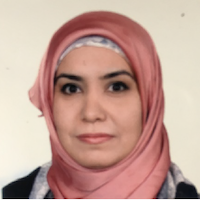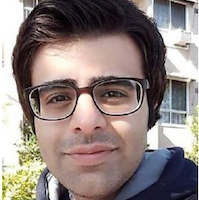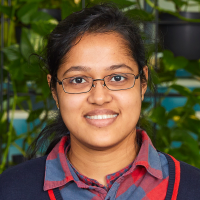Melbourne Granular Geomaterial Laboratory
Research
We are fascinated by how geo-material and in particular granular material respond to mechanical and environmental loads. While our approach is primarily routed in experimental and field investigations, we take advantage of advanced imaging techniques and particle-scale modelling to advance our understanding of granular material behaviour. Complexities such as the interaction of fluids with granular material (internal erosion) or unconventional granular assemblies (tyre particles mixed with sand or gravel, i.e., soft-rigid mixtures) are examples of interesting projects we pursue.
Our expertise lies in analysing the micro and macro scale behaviour of granular materials.
Our team leads research on experimental investigations of granular geomaterials and field monitoring of geo-structure interaction with surrounding soil using Optic Fibre Sensing Technology.
Some of our research interests include:
- The behaviour of Granular materials in particular soft-rigid granular mixtures
- Fibre optic sensing for Geo-structures
- Data-rich element testing
- Suffusion & internal soil erosion
- Discrete element modelling of granular material
Active projects
- Soft-rigid bonded granular mixes: particle scale study to field predictions
- Heat transfer and fluid flow in geomaterials: Physics-inspired AI framework
- Braced Batter Micropile Group: New Design Theory and Performance Framework
- Permeable pavements in sustainable urban drainage systems using recycled aggregates
- Large Scale Field Trial and Performance Monitoring of Tyre Derived Aggregate Permeable Pavements
- Recycled plastic noise barrier walls – demonstration and real-time monitoring
- Latrobe Valley Material properties evaluation
- Mechanical and Chemical Testing and Analysis of Geomaterial for GHD
- Development of Deep Soil Mixing Technology Utilising Industrial By-products
- Field Pullout Testing and Result Interpretation on newly developed Driven Spiral Footing
- Static Field Testing on Battered Minipile Footings
- Recycled Plastic Noise and Retaining Barrier Walls-Demonstration and Real-Time Monitoring
- Recycled material blends to improve the life of sewer infrastructures
- A novel application of recycled glass in lightweight concrete
- New approach for design of barriers for impact
- Fibre optic sensing of retaining wall, energy pile, pipe-jacking monitoring
- Generation of microplastics from waste tyre permeable pavement
-

2024 April - Visit from Dr Joanna Fonseca.jpeg
2024 April - Visit from Dr Joanna Fonseca -

2023 June - Visit from AProf Arghya Das .jpg
2023 June - Visit from AProf Arghya Das -

2016 Nov - End of Year Meal
End of Year Meal - Nov 2016 -

2022 May - Lunch with Matheo Ciantia.jpg
-

2018 Oct - Group Photo at Parkville Campus
-

2015 June - Field Testing of Minipiles
-

2018 Nov - End of Year Lunch
-

2019 July - Visit with Dr Thomas Shire from Glasgow Uni
-

2019 July - Visit with Dr Thomas Shire of University of Glasgow
-

2018 June - Visit with Professor Jonathan Fannin of University of British Columbia
-

2016 Feb - Imaging Particle Crushing
-

2019 Aug - Waste Tyre Permeable Pavement Field Open Day
Team Leader
Current Staff
Current staff
Research Students (Current)
Past Staff

- Dr. Alireza Mohammadinia, Research Fellow (2016-2018)
Current position: Senior Consultant, Geotechnical Engineer at WSP USA

- Dr. Asmaa Al-Taie, Research Fellow (2019-2021)
Current position: Research Fellow at Victoria University

- Dr. Amin Soltani, Research Fellow (2019-2021)
Current position: Lecturer at Federation University

- Dr. Yunxin Xue, Research Assistant (2020-2021)
Current position: Graduated PhD program at Swinburne University of Technology
Research Students (Graduated)

- Dr. Ehsan Yaghoubi
PhD title: A framework for unsaturated behaviour of recycled aggregates in pavement applications
Now - Senior Lecturer at Victoria University

- Dr. Tabassom Afshar
PhD title: Micro-scale behaviour of recycled construction and demolition material: Discrete element method simulations and physical testing
Now – Senior Geotechnical Engineer at FSG Geotechnics and Foundation

- Dr. Amirhassan Mehdizadeh
PhD title: Soil movement in hydraulic structure with piles foundations
Now – Senior Research Fellow at the University of Melbourne

- Dr. Asmaa Al-Taie
PhD title: Volume change behaviour of Victorian expansive clay
Now – Research Associate at the Victoria University

- Dr. Mehrdad Ahmadi
PhD title - Impacts of Internal Erosion on Mechanical Behaviour of Granular Material Using Coupled CFD-DEM
Now – Research Associate at the University of Newcastle

- Dr. Sanchari Mondal
PhD title - Behaviour of Driven Battered Minipiles: Field, Physical and Numerical Modelling under Lateral Loading
Now – Research Fellow at the University of Melbourne

- Dr. Ramin Raseesi
PhD title - Mechanical performance of TDA-based permeable pavements
Now – Senior Geotechnical Engineer - Dams at AECOM

- Dr. Phillip Chin Fung Tsang
PhD title - Application of Fibre Bragg Grating sensor in mini pile performance and behavior monitoring
Now – Junior Geotechnical Engineer at EIC Activities

- Dr. Chen Dong
PhD title - Impacts of internal erosion on soil fabric and mechanical behaviour
Now – Civil Engineer

- Dr. Reza Asadi
PhD title - Investigation of the mechanical behaviour of rockfill materials - Now – Geotechnical Engineer at ATC Williams
Past Internships
- Zhiheng Liang (2023), Now - Masters Student at The University of Melbourne
- Yifei Xu (2023), Now - Graduate Engineer at Veolia Australia
- Gio Olivar (2022), Now - Masters Student at The University of Melbourne
- David Olwen (2020), Now - Geotechnical Engineer at Aurecon
Visiting Academics
- Dr. Joana Fonseca, City, University of London
- A/Prof. Arghya Das, IIT Kanpur
- Dr. Antione Wautier, INRAE
- Dr. Nadia Benahmed, INRAE
- A/Prof. Mattheo Ciantia, The University of Dundee
- Dr. Thomas Shire, The University of Glasgow
Collaborations
Academic collaborations
- City, University of London
- Indian Institute of Technology Kanpur
- INRAE
- University of Glasgow
- University of Dundee
- University of Toronto
- Swinburne University of Technology
- Victoria University
- University of Newcastle
- Suranaree University of Technology
- Monash University
Industry collaborations
Current projects
-
-
-
PhD student
Supervisors
Associate Prof Mahdi Miri Disfani, Associate Prof Guillermo Narsilio
It is an Australian Research Council linkage project focussed on analysing the behaviour of laterally loaded battered minipiles and their soil-structure interaction through 1g model laboratory tests, full-scale field investigation and numerical modelling in both cohesionless and cohesive soil. The driven battered minipile footing is an innovative foundation system that is low-cost, easily installable in inaccessible areas and free from carbon footprint. The project also involves advanced usage of fibre optic sensing technology as an instrumentation technique. The output or the findings are not only applicable for the minipiles but can also be applied to understand the soil-structure interaction of general piles, mainly battered. As a result, the implementation of battered piles/minipiles by professional engineers will become a more confident choice as a cost-effective alternative to existing deep foundations.
-
PhD student
Supervisors
Associate Prof Mahdi Miri Disfani, Associate Prof Guillermo Narsilio, Dr Amir Soltani
Waste tyre-based permeable pavements are bound soft-rigid mixtures, made of granular geomaterials, recycled tyre rubber granulates and a polyurethane binder. Covering surfaces with this porous material, specially in dense urban areas, not only can reduce the risk of flash floods, but also gives the waste tyres another purposeful life. My research mainly focuses on the mechanical performance of waste tyre-based permeable pavements under different loading conditions as well as their failure mechanism. The results of my experiments from both laboratory element testing and field performance monitoring (in real scale) has provided a better understanding of the behaviour of this novel material and been used to optimise the mixture for different applications.
-
PhD student
Supervisors
Associate Prof Mahdi Miri Disfani, Dr. Behrooz Ghahreman-Nejad
Rockfill; a granular material with particle sizes usually in the range of 5 cm to 1 m is commonly used in a range of civil engineering applications such as retaining walls, railways, and rockfill dams. Rockfill’s complex behaviour which mainly stems from inherently discrete and heterogeneous nature on one hand and expensive and time-consuming experimental tests which require large apparatuses on another hand, highlight the need for the numerical investigation of this material using Discrete Element Methods. Consequently, a thorough and comprehensive investigation of behaviour and associated parameters of rockfill seems necessary so that uncertainties surrounding the design and safety of rockfill structures can be addressed. In other words, establishing a framework based on assimilating studies in the literature and conducting investigations on unclear aspects of rockfill behaviour and the effective parameters, is the ultimate goal of this study. The primary results show a very good agreement with the realistic behaviour of Rockfill in micro and macro-scale including breakage pattern and stress-strain behaviour.
-
PhD student
Supervisors
Associate Prof Mahdi Miri Disfani, Associate Prof Yinghui Tian, Associate Prof Guillermo Narsilio
Battered mini pile systems are widely used deep foundation systems to support small to medium scale structures such as electricity poles, transmission towers, and onshore and shallow offshore renewable energy structures. They are advantageous as they are relatively cheaper than other supporting structures and can be quickly installed using hand-held or lightweight hammers, especially in sites with limited access. The nature of these systems support structures requires them to resist significant eccentric cyclic lateral loads due to wind and waves and vertical loads from the superstructure. The combination of eccentric cyclic lateral and vertical loads creates a complex load regime acting on the systems. However, the existing design guidelines fail to incorporate the effect of complex cyclic loadings when determining the lateral performance of the systems. Moreover, the pile-soil-pile interaction while accommodating the soil arching effect and block behaviour (when working as a group) is not incorporated in current design practices. Many researchers investigated the behaviour of battered mini piles and systems subject to static and cyclic lateral loads without incorporating the vertical loads, creating a knowledge gap in this area. This thesis builds upon the past literature by exploring the behaviour of pile groups, more specifically, the battered mini pile systems in cohesive soil under complex loading, by using soil-structure interaction analysis. This study is carried out through physical models and advanced numerical models. This study systematically investigates the battered mini pile system’s behaviour under static complex loads and extends to investigating the system’s behaviour under cyclic complex loads.
-
PhD student
Seyed Meysam Mousavi Eshkelani
Supervisors
Associate Prof Mahdi Miri Disfani, Dr. Amirhassan Mehdizadeh
Suffusion as an internal erosion is a phenomenon particularly occurs in susceptible soils such as gap-graded soil in which fine particles are more prone to migrate. The leading factors for this modification are specific geometric, stress and hydraulic conditions. Particle scale modeling using discrete element method (DEM) enables the analysis of the fabric, particle motion and stress. When DEM is coupled with computational fluid dynamics (CFD), more criteria can also be considered. This contribution aims to provide a developed coupled DEM-CFD model to investigate the internal erosion process including initiation, continuation, progression and breach. Once the model is validated by some internal erosion tests in laboratory, it could provide a better understanding of internal erosion considering fluid-particle interactions






